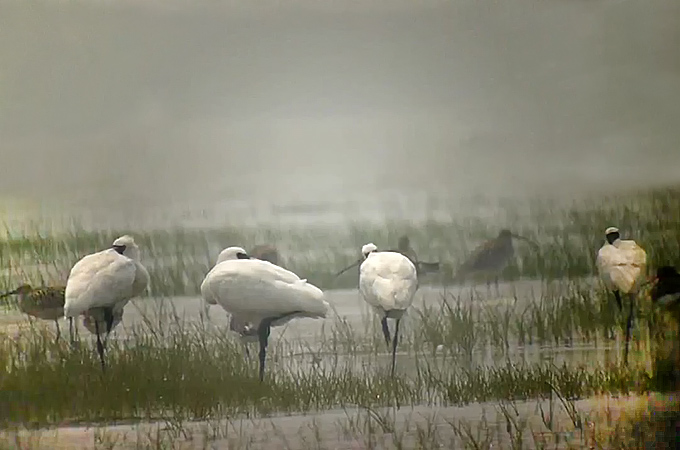 | E-mail to Birds Korea |
 | KWBS |
in the Region
 | The Oriental Bird Club |
 | BirdLife International (Asia) |
July
Hot (typically maxima above 25°C, and sometimes reaching 34°C) and humid, with occasional storms and heavy rains associated with southern-tracking typhoons.
Young Japanese and White Wagtails can be found begging food on streams and rivers in the East and southeast. Juvenile Chinese Egrets and Eastern Oystercatchers are on north-west tidal-flats, in some areas feeding alongside summering Saunders’s and Mongolian Gulls. Chinese Sparrowhawks are on telegraph poles in rice-fields throughout the country. Black-naped Orioles, Vinous-throated Parrotbills and parties of tits, are found in almost all woodland areas. By the end of July the first returning shorebirds arrive, with large numbers of Far Eastern and Eurasian Curlews at Ganghwa and the Geum Estuary.
“Southern breeders” in recent years have included Pheasant-tailed Jacana, White-breasted Waterhen and Greater Painted Snipe. In 2006 an early typhoon brought Korea’s first Bridled Tern, to Jeju island.
(The following records are a compilation of our own sightings and records sent in by other observers. As well as being posted on the Birds Korea website(s), selected records are also forwarded to other Korean-language birding websites; records of threatened species are arranged and forwarded to Birdlife International and national authorities when appropriate; flag images and records are passed to bodies responsible for their coordination throughout the flyway; and all records sent to us are used to compile annual reports and to support the evolving understanding of the status of many of Korea’s birds.)
Songdo, July 24
Infilling and reclamation continues at the final mudflat. Black-faced Spoonbills were busily trawling its remaining water channels to feed their begging young at the nearby nesting island, where I counted 17 adults and 23 juveniles. An official bird-viewing platform has been erected overlooking the scene. Mongolian Gulls have also mostly fledged although I noticed 6 adults and 6 juveniles. Also nearby an apparent Oriental Scops Owl feather.
In view on the mudflat itself (where tidal flow not yet cut off), 260+ Common Greenshank, 1 Eastern Oystercatcher, 8 Common Sandpiper,10+ Grey Plover, 2 Far Eastern Curlew, 1 Dunlin, 10+ Bar-tailed Godwit, 1 Whimbrel, 4 Saunders’s Gull and 2 Little Tern.

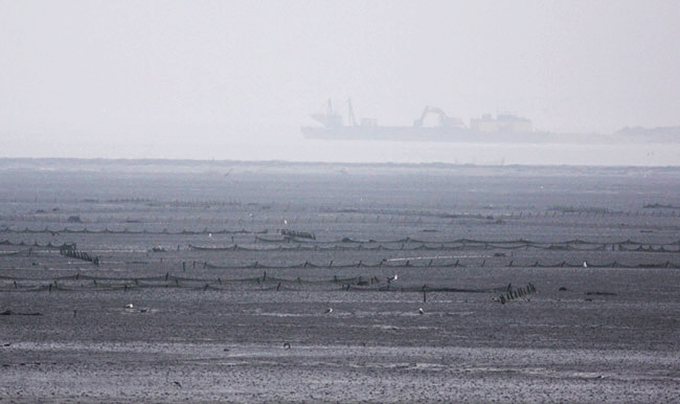

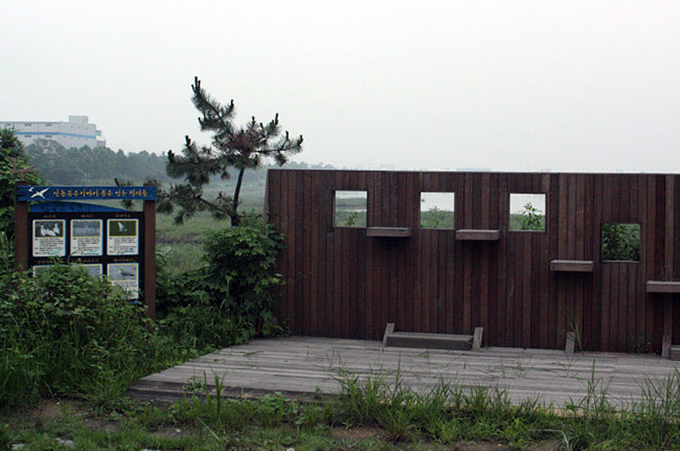
Nam Cheon, July 21
I was allowed to go home early yesterday, at 2.30pm.
Considering there was a break in what has been rather inclement weather, and with plenty of time, I decided to walk from home to Nam Cheon, down to the coast, then north to Buk Cheon and back home again from there. The walk took me a bit over 4 hours with several delays to see and photograph various wildlife.
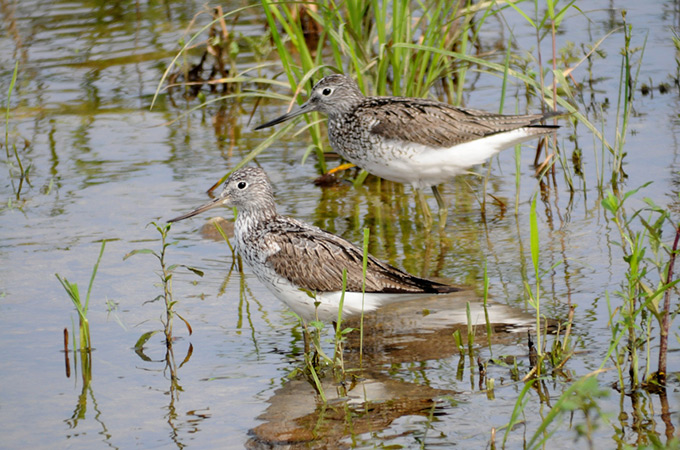
At first my walk seemed a bit dull with just Tree Sparrows, Oriental Reed Warblers and a Siberian Stonechat along the first part of Nam Cheon. Adding an Oriental Turtle Dove and a couple of Striated Herons didn’t make things a lot brighter. Then I found 6 young Mandarin Ducks and 7 Eastern Spot-billed Ducks along the flooded creek. They all took cover in the long grass as soon as they saw me. The two Common Greenshanks were more cooperative and I took all the photos I wanted of them, both with my zoom lense and with my digiscope.
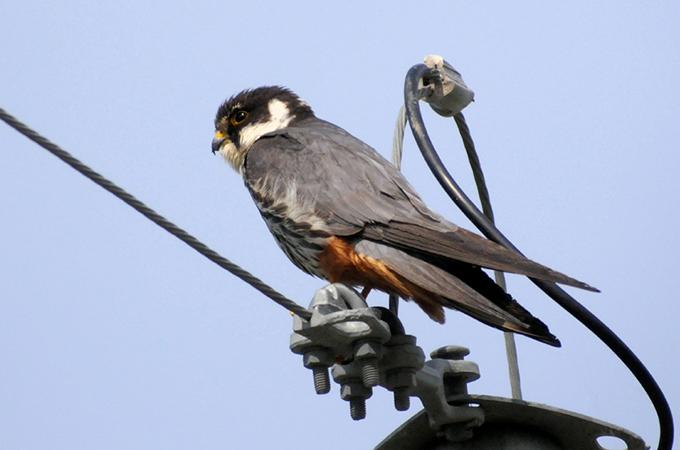
My next target was a Eurasian Hobby that obligingly sat on top of an electricity pole while I took as many photos of it as I wanted getting close enough for almost full frame shots using the digiscope. I was next to a thick patch of grass under the electricity cables taking Hobby photos when I notice a few young Tree Frogs. It was then that I regretted leaving my macro lense at home, but I still managed to get some acceptable images using my large zoom and my small zoom lenses. I counted about 30 of these froglets in about three square metres enjoying the afternoon sunshine.
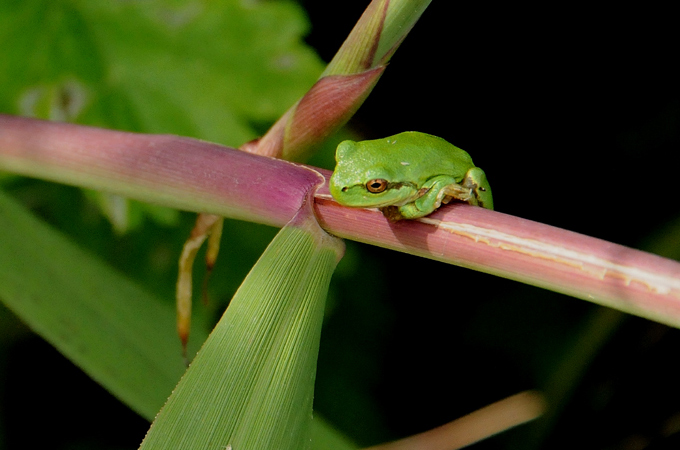
Heading north didn’t show me a lot more birds, 5 Grey Herons, 2 Eastern Great Egrets and more Tree Sparrows. Along a small concrete drainage ditch I heard the distresses cries of a frog. The ditch was a bit overgrown with grass but I managed to find what I think was a Water Snake with a good sized Black-spotted Pond Frog in its mouth hanging into the ditch. I got one acceptable photo looking through the grass, but when I tried to clear the grass away for a better view, the snake dropped into the water in the bottom of the ditch. At Buk Cheon I saw about 120 Black-tailed Gulls, a few Vega Gulls, 7 Great Cormorants, 6 Grey Herons and 3 Spot-billed Ducks on the sandbar.
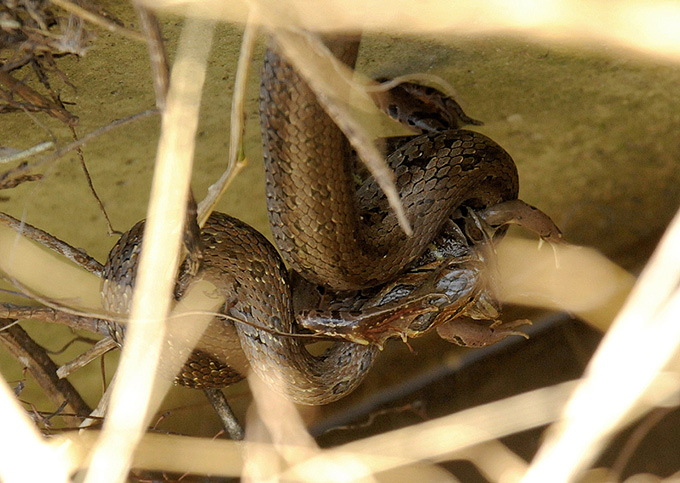
I didn’t see many more birds until I found a Black-capped Kingfisher at the hill where the Egrets and Herons nest each year. I had a little walk through the forest on the hill before heading back to Buk Cheon. The Kingfisher was sitting on a wire near near the creek and I was just about close enough to get photos with my digiscope equipment. I had it all set up and was just focusing on the bird when it flew away. Another couple of seconds would have been enough to get some photos.
I didn’t see a lot more until I got to the new highway. I found about 20 Grey-capped Greenfinches there. I think they were eating the insect larvae that roll the edge of leaves on Robinia pseudoacaia trees. At the Buk Cheon weir there was a Striated Heron and two Grey Wagtails. A little further along I saw about 30 more Grey-capped Greenfinches, this time feeding on seeds of Coreopsis lanceolata flowers growing on the side of the new highway.
From there I decided to head home along the ridge track to the northeast of Ganseong Eup. As I climbed up the embankment to the top of the ridge I found some Eastern Great Tits. I think they were feeding on the small black insect larvae that were eating the leaves of some regenerating shrubs. There were some Yellow-throated Buntings in the same area and I could hear a couple of Grey-backed Thrushes singing to the east in the forest. There were more Tree Sparrows at the top opf the ridge. As I walked along the ridge track I found two Tiger Shrikes. They both had food in their bills so they must have had young nearby. I also saw a Great Spotted Woodpecker, Brown-eared Bulbuls, Black-naped Orioles and Barn Swallows as I went along the ridge. It was getting close to 7 pm when I heard something moving in the low vegetation off the track. Carefully approaching a small partly cleared are I saw a family of 5 Racoon Dogs. I was lucky enough to get a couple of photos of two before they disappeared into cover.
In the last bit of foest at the edge of town I found a couple of Daurian Redstarts, more Tree Sparrows, a Dollarbird and a Japanese Pygmy Woodpecker. In all I had quite a nice time on my free afternoon and I got some nice photos. I really get up to some mischief when they let me out early, don’t I?
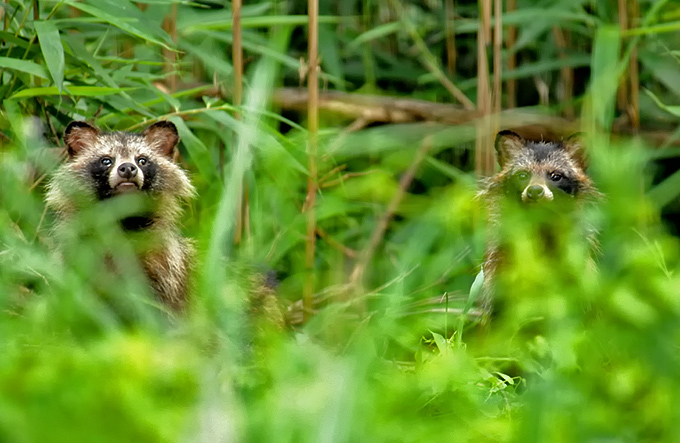
Junam Reservoir, July 3
Two Pheasant-tailed Jacanas were an interesting (and unexpected) sight flying low over the water, leading to thoughts of possible breeding given the suitable habitat and the time of year.
Nakdong Estuary, July 2
Had a fantastic time Saturday visiting the Nakdong Estuary with local experts Mr. Mo In-ho and Ms. Park Young Ju. Aboard Mr. Mo In-Ho’s quite maneuverable boat, I held on tight for a ride that proved to be the best way to spend an afternoon on the Nakdong. Some Little Terns swooping here and there, and there and here, were so impressive to watch. Far Eastern Oystercatchers caught our eyes as they moved around their muddy intertidal feeding grounds. Several Far Eastern and Eurasian Curlews were observed on Baekhapdeong, as were the magnificent seven Black-faced Spoonbills. Wow.
We set out to one of the other islands on the estuary to observe Styan’s Grasshopper Warbler but were unfortunately unsuccessful, although at first a trill and then the distinct singing of an individual Styan’s could be heard somewhere among the many tall swaying reeds of the Calamagrostis epigeios. Its song was soon beclouded by the songs of the brazen Oriental Reed Warblers which continuously echoed across the steamy banks of this small grassy island in the sun. Upon heading back, thankful for this time spent, I could only think about how much there is to learn from this estuary, and once again, I found myself truly captivated by the natural charm of the Korean Peninsula and the people who love it.
